 Have you heard of the Bum Deal website?
Have you heard of the Bum Deal website?It lets you search for things like nappies and wipes, by brand or size and it will tell you how much these items are in a wide range of stores, ensuring you can quickly find the cheapest options, saving you money month on month.
 If you have ever been Googling, “Why won’t my child sleep?” at 3am – and let’s face it, we’ve all been there at some point – you will no doubt have learned that naps are a significant part of the equation. It’s certainly true that a settled night’s sleep is largely built in the day. So, why is it that getting a little one to nap can be so blooming hard?!
If you have ever been Googling, “Why won’t my child sleep?” at 3am – and let’s face it, we’ve all been there at some point – you will no doubt have learned that naps are a significant part of the equation. It’s certainly true that a settled night’s sleep is largely built in the day. So, why is it that getting a little one to nap can be so blooming hard?!
It turns out that daytime sleep can be tricky for children – not least because they are working against their body-clock and lack the enormous helping hand that the sleepy hormone melatonin provides for night-time sleep. The daytime is just an altogether less natural time to sleep. As little ones move through toddlerhood, daytime life can also become way too exciting to waste time sleeping. Phases of nap-refusal are particularly common during certain stages of development – either because a little one just has too much else to think about and/or practice, or, especially in toddlers and pre-schoolers, the increasing desire for autonomy leads to some experimentation with simply refusing to sleep.
Why does my baby need to nap?
Naps are about controlling sleep pressure. The younger a child is, the shorter their comfortable awake window. If a nap isn’t forthcoming at the point a little one needs it, a hormone called cortisol is secreted enabling them to “keep going”. If you’ve read my previous post on overtiredness (which can check out HERE), you’ll know that cortisol is at the root of many baby and child sleep challenges! Well-timed naps are the key to keeping a little one’s cortisol levels in check.
So, if daytime sleep is tricky but essential, how do I help my child to nap well?
When we are alerted to the importance of naps, it’s logical to begin working on them in earnest. However, because of the comparative biological ease of night-time sleep, it actually makes the most sense to start there. If your little one is fed-to-sleep or rocked-to-sleep overnight, assume they will also need this help for naps – both at the start of the nap and potentially also to extend the nap beyond around 45 minutes (when the first sleep cycle ends). Most children stir at the end of the first nap cycle – but rarely are they genuinely “done” sleeping by this point. Experiment with meeting this end-of-cycle wake-up as you would a night-waking and seeing whether your little one will resettle. Similarly, if your little one has fallen asleep in the pram, car or carrier and the motion has ceased since they fell asleep, gently restarting it around the 40-minute mark, might just help your little one slip into a second cycle.
When at home, if you want your little one to nap in their own sleep-space, work on making the conditions as close to bedtime as possible. This means having a short, consistent pre-sleep routine
consisting of three to four steps, which will, over time, cue your child for sleep. Keep the sleep environment as dark as possible and ensure any associations your little one has around their night-time sleep such as white-noise are present.
How many naps does my child need?
Whilst all little ones are different, there is surprising commonality across nap needs by age. As a general guide, I would say the following are typical nap milestones:
· No real pattern to naps until around month four – although for some little ones, naps don’t consolidate onto a more settled pattern until nearer six months.
· From four months to eight to ten months, most little ones sit well on three naps with the bulk of the sleep split across the first two and the third being a late-afternoon catnap.
· Sticking with two naps until around fifteen months makes the two-to-one transition easier. Although children often experiment with some nap refusal around their first birthday, this is almost always a phase which passes within a week to two.
· Most children benefit from some daytime sleep until around three-and-a-half.
Does motion-sleep count?
In a word: yes…although the sleep isn’t of the same quality as sleeping without motion. This is because whilst the motion persists, we remain in a lighter phase of sleep – more ready to respond to environmental threats. Motion is almost irresistibly sleep-inducing to a tired child and can be a great, drama-free way to start a nap. If you can cease the movement once they are asleep, your little one is likely to achieve more restful sleep once stationary – giving you the best of both worlds. So, instead of pushing the pram for miles, there’s a very good reason to park up and grab yourself a coffee whilst baby snoozes!
With special thanks to Lauren at Little Sleep Stars for her super blog.
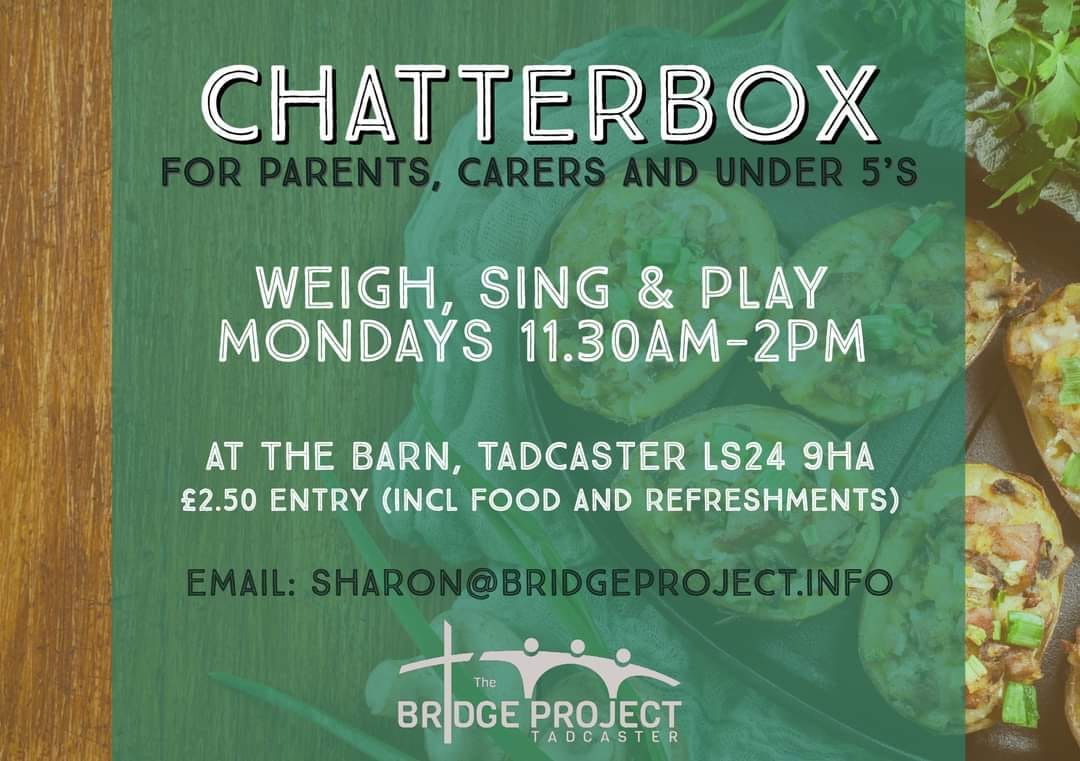

For lots of people, the Autumn clock-change is a thing of wonder – a whole extra hour in bed without having to sacrifice anything else in return…bliss! For parents, however, it can induce a feeling of dread. Many are accustomed to rising between 6 and 7am with their little larks, and whilst perhaps a touch on the early-side, 6-something cannot technically be classed as inhumane. Yet on the morning of Sunday 28 October, that 6 will have turned, literally overnight, into an altogether less appealing 5!
Here is my step-by-step guide to helping your little one to make the transition out of British Summer Time as smoothly as possible.
The options
1. Step-change
An incremental approach is usually best for babies and younger children and/or those who have generally fixed sleep and wake times.
Parents should commence this plan on the Wednesday night immediately proceeding the clock change, putting their child to bed 15 minutes later than usual – so 7pm would become 7.15pm. There should be scope for a little one to sleep for 15 minutes past their standard wake time on the Thursday morning. Whilst this may not automatically happen, if it does and can be accommodated, the plan is off to a flying start.
If at all possible, parents should adjust meal and nap-times on the Thursday so that they also sit 15 minutes later than usual.
On the Thursday night, bedtime should be pushed back by a further 15 minutes – so to 7.30pm from a starting point of 7pm. As before, parents should factor in that their little one may sleep a little later on the Friday morning.
Again, meal and nap times should be moved in line with the “new” (albeit very temporary!) daily schedule on the Friday if at all possible.
The process of adjusting times by a further 15 minutes should be continued, meaning that on the night of the clock change, the little one goes down at 8pm but only 15 minutes later than the previous evening.
Managing the one hour change in these smaller steps means there is less scope for a child to become overtired. It also enables their body-clock to adjust. A 60-minute time difference split over three or four days is manageable for almost all children.
All in
For less sensitive sleepers and older children for whom overtiredness isn’t so much of a risk, parents may find it works well to just push bedtime back on the Saturday night by as close to an hour as the child can manage. A child who still naps in the day can be given a helping hand by their nap on the Saturday afternoon being nudged back slightly to better balance the awake time in the morning and afternoon. However, for a little one who does still nap (some daytime sleep is typically helpful until around 3 years old), a full hour is a long time and pushing a child too far into the red of tiredness is likely to have a horrible unintended consequence – they will get up even earlier than usual the following day!
As counterintuitive as it sounds, a child who goes to sleep too late is likely to wake super-early. This is due to a hormone called cortisol which they will have secreted in order to stay awake. Cortisol is released naturally by the body to wake us for the day, with levels gradually starting to rise from around 3am. Whilst this would typically build sufficiently to rouse a little one between 6 and 7am, a pre-existing level of cortisol means the process kicks in too hard, too early, leading to a child who is wide-awake at 5-something (or the “new” 4-something!).
A middle-ground
The final option is to essentially split the difference and stretch a little one to a bedtime on the Saturday night that is 30 minutes later than usual. As before, in order to reach that later bedtime whilst avoiding the dreaded “second-wind” of overtiredness, Saturday’s nap(s) can also be nudged back by 15 minutes. This means the extra half hour of awake time will be split evenly across the morning and afternoon.
As a little one won’t have made it all the way to 8pm with this approach, parents should expect a wake-up that is a little early by the new clock time on the Sunday morning. However, this will iron itself out pretty quickly over the course of the following few days. Young children, unable to tell the time, are driven by what time of day it feels like, so if parents maintain meal-times consistent with the “new” time, little ones will soon adapt.
Lighter mornings
One helpful aspect of the clock-change when it comes to child sleep is the darker evenings. Melatonin, the hormone which makes us feel sleepy and helps us to stay asleep, is secreted by the body in low levels of light – which is why we typically find it much easier to sleep in a dark environment. However, as the evenings darken, the mornings will, for a short time at least, be a little lighter. If this daylight is creeping into a child’s room, it is likely to drive them towards wakefulness. With this in mind, blackout blinds can be one of the best purchases a parent ever makes!
Special thanks to Lauren at Little Sleep Stars for sharing this super blog with us.
T: 07977 583728
www.littlesleepstars.com
 Every festive season sees my inbox inundated with messages from parents seeking tips to tackle the undisputed trickiest bedtime of the year. The unbridled giddiness that often accompanies Christmas Eve creates the potential for a bedtime banana skin – but to keep things on track, here are my top tips for a bedtime that is a dream rather than a nightmare before Christmas…
Every festive season sees my inbox inundated with messages from parents seeking tips to tackle the undisputed trickiest bedtime of the year. The unbridled giddiness that often accompanies Christmas Eve creates the potential for a bedtime banana skin – but to keep things on track, here are my top tips for a bedtime that is a dream rather than a nightmare before Christmas…
1.Get outside during the day on Thursday. Fresh air & physical activity are great for sleep. A bike-ride, game of football or a family walk gives little ones a constructive outlet for pent-up excitement.
2.Don’t aim for deliberate exhaustion, be tempted to skip a nap or push bedtime back though. This can lead to overtiredness which commonly drives bedtime battles, frequent night-waking & early-rising, due to the hormone response that happens when we go too far into the red and need to “keep going”. Whilst, logically, later–to–bed equals later–to–rise, a bedtime that is too late is one of the most common reasons for a 5-something wake-up the following day.
3.Support your child’s body to produce the sleep-inducing hormone, melatonin, by avoiding screens after your evening meal on Christmas Eve. Really focus on the last two hours of the day on Thursday, planning for quiet, calm family activities to fill the dinner to bedtime window & try turning the lights down just a little – it will help get the melatonin flowing.
 4.Check out sleep-inducing foods & work them into your evening meal if possible. Great options are salmon, tuna, rice, whole-wheat pasta, onions, sweet potatoes, warm milk & bananas.
4.Check out sleep-inducing foods & work them into your evening meal if possible. Great options are salmon, tuna, rice, whole-wheat pasta, onions, sweet potatoes, warm milk & bananas.
5.Avoid sweet treats close to bedtime, especially chocolate as it lacks a punch with hidden caffeine as well as sugar. Some less well-known saboteurs of sleep include tomatoes, steak and hard-cheeses.
6.Complete your child’s bedtime routine in full – skipping a step can really throw them off & lead to a protracted settle to sleep.
7. Stay calm! Trying to rush is likely to lead to a little one stalling & procrastinating. Resorting to, “Santa isn’t coming unless you go to sleep right now” tends to result in a child ramping up rather than down, driving their cortisol level higher, making getting to sleep & staying asleep even harder. Keep calm and give away no clue that you are actually desperate to get back down the stairs to finish some last-minute wrapping of presents whilst munching on the mince-pie lovingly left out for the Big Man.
As with all things sleep, if Christmas Eve doesn’t go exactly to plan and your nights get bumpy for a while, be consistent over the next few days and you will get back on-track in time to start 2024 in great sleep-shape.
Merry Christmas Mumblers – see you on the other side..!
With special thanks to the lovely Lauren at Little Sleep Stars for this super blog.
 Selby Library
Selby Library
Fortnightly on Thursdays 10.30am-12pm
Sherburn-in-Elmet
All Saints Church Hall, Fortnightly on Thursdays 1pm-2pm
Please visit the North Yorkshire West 0-19 Healthy Child Team Facebook page or App for the exact dates and more information on the service.
Health Visitor SPoC number 0300 303 0916
What type of childcare is right for us?
There are many different types of childcare setting, they all offer something slightly different, so it’s important to firstly decide what type of setting might work best for you.
Nursery
A nursery will usually take both young babies and children right up until the age of 5 or until they are due to start school. They will vary in size, and often offer all year round support, including early drop off times and later pick-up times.
Pre-School
A pre-school will usually take children between the ages of 2 and 5, many are attached to a school. They are considered a good way of helping prepare a child for school. Opening hours tend to align to schools, so they may not offer early drop offs or later pick-ups and may not open during non term time.
Childminder
A childminder will be self-employed and look after babies, toddlers, and children from their own home. Many offer a little more flexibility and might also be able to help with older siblings by providing before and after-school childcare.
Nanny
Nanny’s can often offer the most flexibility, as well as caring for your child in your home, they might also be able to assist with babysitting, cooking, cleaning and other chores around the house. Some Nanny’s might even live in the home with you.
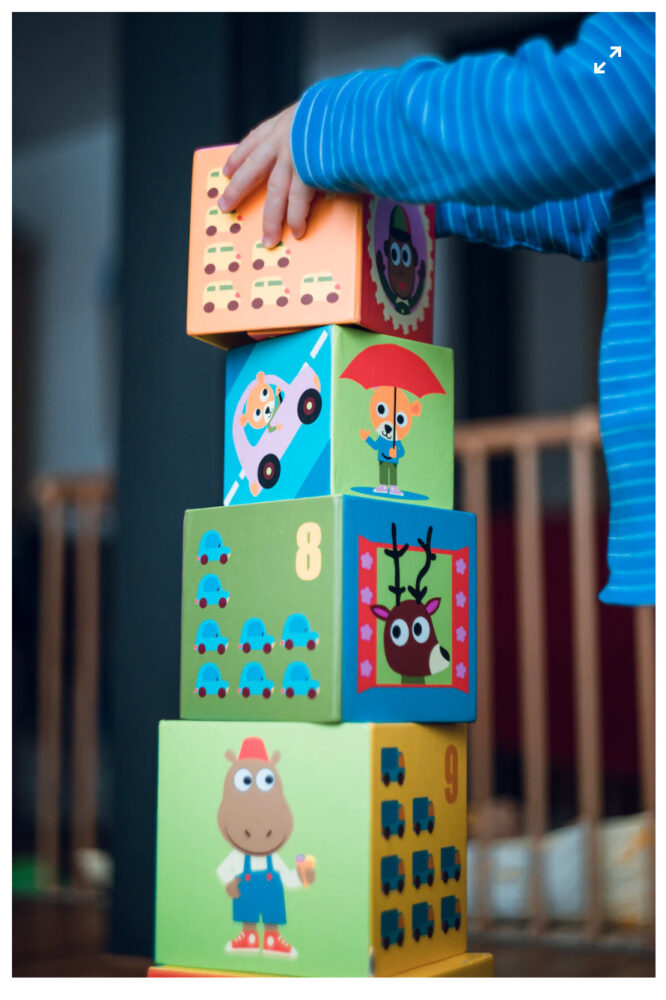 It’s normal for parents and carers to be looking for different things when it comes to finding the perfect setting, so write a list of things that are important to you and focus on these as a priority.
It’s normal for parents and carers to be looking for different things when it comes to finding the perfect setting, so write a list of things that are important to you and focus on these as a priority.
Cost can play a big part, calculate how much the setting will cost per month and how much salary we be left for other things. It’s important to research what Government Childcare Funding might be available to you too.
To ensure you cover everything, create a list of questions to take with you. We’ve added some below to help give you a few things to think about. If you forget to ask something, get back in touch with the setting, ensuring you have all the answers you need to make the right choice.
Things to look out for
We know there can be lots of fun messy play that goes on in every setting, and that’s great, but are the premises clean and does there appear to be good health and safety measures in place?
Does the setting having a nice outdoor space enabling the children to get some fresh air and explore the outdoors?
Do children look happy?
What’s the settings Ofsted rating ?
Have you discussed this new chapter as a family? Who will do pick up and drop off, who will pay, who will look after the children if it’s a setting that is term-time only?
It’s a great idea to do a trial run to the setting, considering what time you would need to leave to do drop off and get to work and what time would you need to leave work to get there for pickup.
Our best advice is to follow your instinct, when you know, you know, it’s a feeling you get when you walk in and as you walk out, you’re likely to get that “This is the one!” moment.
Our Top 25 Questions you may want to ask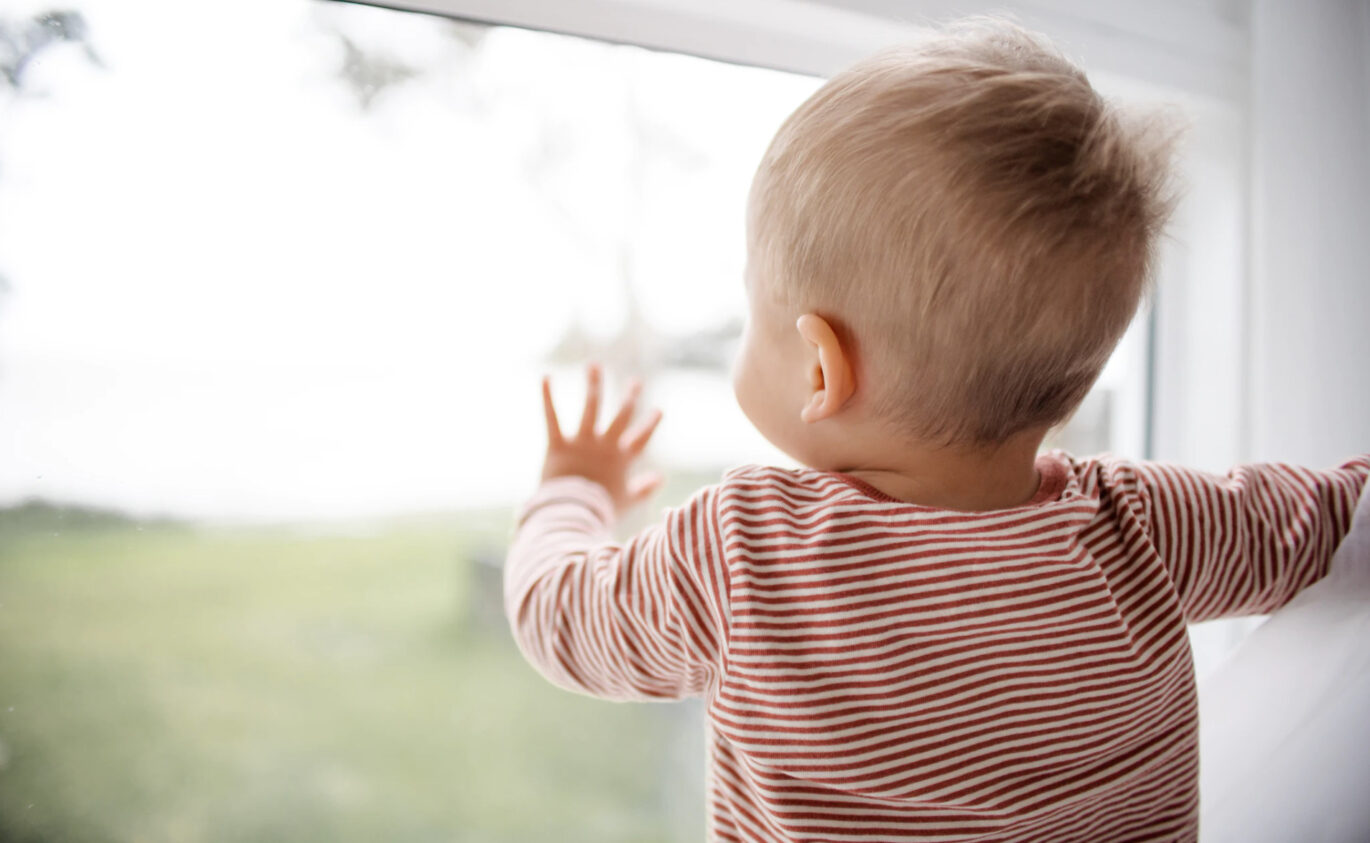
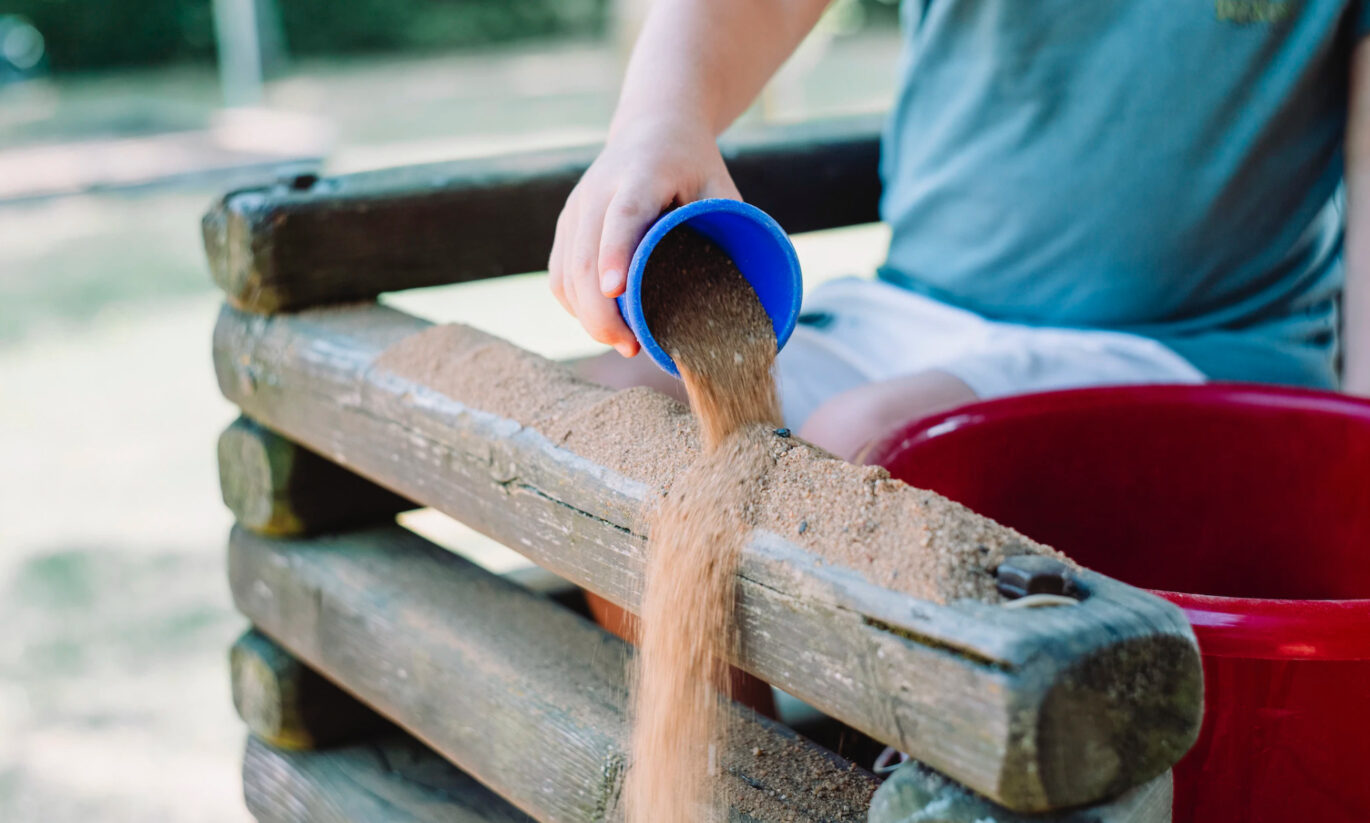
Wherever you choose, we hope you’ll find a great setting. There are some wonderful ones around and if you do find a great one, we’d love to hear from you at stag@mumbler.co.uk. We’ll get them added to our website, ensuring other parents know about them too.
We know that letting go of your child and sending them off to a childcare provider can be a huge cause of anxiety for many parents, you’ve probably spent the last 6-12 months together and suddenly you might be preparing to go back to work, not seeing them as much, and be placing all the responsibility for their care with a complete stranger. Kathryn at STAG Mumbler is a trained Return to Work Mentor and Coach, if you’re struggling with this new stage in your life, you can always get in touch at stag@mumbler.co.uk for advice and support from someone who has been there.
 Lauren Peacock, Sleep Specialist, makes her blogging debut for STAG Mumbler.
Lauren Peacock, Sleep Specialist, makes her blogging debut for STAG Mumbler.
Easy and gentle strategies for optimising sleep with a newborn
Whenever I talk to expectant parents, sleep is a big topic of conversation! Parents and non-parents alike seem to delight in explaining, often in great detail, how little sleep a family can expect when their newest team member arrives. On the other hand, any number of books will promise to have your baby sleeping through the night and napping on a schedule pretty much by the time you bring them home from hospital. But what is the truth? Here is my impartial, honest guide to what you can expect in the early months and how to optimise sleep during this precious time.
Nothing compares to you
A child’s sleep habits are overwhelmingly behavioural and shaped by their experiences. But there are a number of “nature” factors that influence a little one’s natural rapport with sleep. When a baby is born, how they are born and, perhaps most notable of all, their innate temperament, all contribute to how tricky (or not) they are likely to find sleep. The temptation to compare our baby’s sleep to our friend’s little one can be overwhelming but it’s a comparison that is at best useless and at worst a source of stress – no two babies have the same relationship with sleep.
Breastfeeding does not mean less sleep
This is a particularly pervasive myth with absolutely zero science behind it! In fact, the evidence shows that it is actually mothers who exclusively breastfeed who get the most sleep overall! The difference compared to formula-fed babies is fairly marginal though so feed your baby however you choose in the knowledge that whether you opt for breast or bottle, it won’t fundamentally impact sleep.
You can’t fit a square peg into a round hole
Babies aren’t robots. As such, there is no one “perfect” routine that will suit every little one and transform them into a sleep machine. Some children are fairly adaptable and will take to a strict schedule. Others will fight against it and leave their mummy feeling like a failure – and that’s not just my opinion; in 2017 Swansea and Newcastle Universities found that half of the mothers they surveyed were unable to make a strict routine work for their child.
It’s EASY
So if a strict routine isn’t the answer, what is? I’m a fan of all things being baby-led but with some gentle structure to create a nice flow to the day – whilst rigid regimes don’t suit a lot of children, most do well with a level of consistency and predictability.
If parents can get into the habit of feeding on waking rather than habitually feeding-to-sleep they will be off to a flying start. This is because, ultimately, a family may want their little one to be able to fall asleep without having to be on the breast or bottle. Working on an Eat-Activity-Sleep-You-time
(EASY) pattern gives a baby the opportunity of falling asleep in a different way during the day. This pattern becomes a whole lot easier when a baby’s comfortable awake time is understood…
Little and often
Newborn babies have a remarkably short window for being comfortably awake – for many it’s as little as 45 minutes! Unfortunately, a baby doesn’t look at the clock and set themselves down for a nap and if there is environmental stimulus around them, they will continue to engage. In doing so, a little one will quickly become “overtired” and once that happens they are likely to fight sleep – both in terms of actually going to sleep and staying asleep for long enough to be fully rested. In my experience, lots of babies who are classed as “colicky” actually turn out to be overtired. If parents provide a sleep-conducive environment after an age-appropriate amount of awake time, they are giving their little one the best chance to fall asleep calmly and take the rest they need.
Don’t worry, be happy
The early days with your baby are a time to rest, recover and bond. It is not possible to create “bad” habits by responding to your baby quickly. In fact, the younger the baby the more closely aligned are their “wants” and “needs” – it’s really impossible to split the two in the early months and so picking your baby up as soon as they cry is not, in any way, creating the proverbial rod for your back. There are however several gentle strategies you can employ during this time to set your little one on the path to becoming a sleep superstar, whilst still being super-responsive. Head over to the Little Sleep Stars blog or click here to read more.
Lauren will be back in two weeks with her next blog ‘The 4 Month Sleep Regression’ so watch this space!
Selby North Children and Family Hub is on the site of Selby Community Primary School, Flaxley Road, Selby. The hub is within walking distance of the town centre.
Parking at the hub is for staff only. There is on-street parking in local streets around the hub. The building is easily accessible to all, and is on one level with accessible toilets and baby change facilities available.
Selby North Children and Family Hub, Flaxley Road, Selby, North Yorkshire, YO8 4DL
Selby South Children and Family Hub is situated in the grounds of Barwic Parade School, Barwic Parade, Selby. On-street parking is available close by.
The hub is on one level and accessible toilets and baby change facilities are available.
Selby South Children and Family Hub, Barwic Parade, Selby, North Yorkshire, YO8 8DJ
Sherburn Children and Family Hub is a satellite site and is attached to the Sherburn library which is situated behind a parade of shops on Finkle Hill.
There is no parking available at the hub but there are parking spaces in the village. There is also short stay car parking in the Co-Op store for a maximum of two hours. Please ensure you take care in coming to and from both centres. Be aware of cars passing quickly and a build-up of incoming and outgoing traffic during school drop off and pick up times.
c/o Sherburn Library, Finkle Hill, Sherburn-in-Elmet, LS25 6EA
Find out more about the changes, and the wide range of community focussed services, support and events available here
The Manor Farm site is fully accessible with services being located at ground level. Parking is available to the rear of the building. All centres are easily accessible for all users. All the centres are on one level and accessible toilets and baby change facilities are available.
Manor Farm Estate, St Joseph’s Street, Tadcaster, LS24 9HA
T: 01937 830524
 Why it happens and why it isn’t a regression at all
Why it happens and why it isn’t a regression at all
The term “sleep regression” is one that many parents are familiar with – although there is actually remarkably little clinical literature acknowledging this often discussed (and feared!) sleep phenomena.
All good things must come to an end
First-time parents often become aware of these tricky sleep milestones when their little one, literally overnight, switches from sleeping for a lovely chunk of six, seven or even eight hours, to waking every hour or two through the night. A quick trawl of the internet is likely to inform parents that their baby is experiencing the “four-month sleep regression”.
This is, however, a particularly inaccurate moniker – firstly because this change in sleep happens anywhere in the first six months rather than specifically during month four, and secondly because it’s the polar opposite of a regression – it’s actually a huge sleep progression.
Sleeping like a baby
Newborn sleep is wonderfully simple in structure. Tiny babies flit from awake to fairly deeply asleep with not much in between. Yes they initially wake frequently for feeds and cuddles but generally speaking they can be put down already fast asleep and stay that way for increasingly longer chunks of time overnight.
But at some point prior to the end of their sixth month, a child’s sleep inevitably and permanently matures and they begin to sleep in a more organised pattern, cycling through periods of lighter sleep every 45-60 minutes. During these phases, a baby becomes more aware of his environment – and is likely to notice if something is different to when he fell asleep.
Sleep skills and associations
Babies who have sleep crutches or associations such as being rocked or fed-to-sleep tend to be hardest hit by this heightened awareness and it’s not surprising – consider if you fell asleep in your bed and when you stirred several hours later you realised you were on a sofa; it’s hardly conducive for rolling over and going back to sleep! When a baby is put down into bed already asleep, they tend to “ping” awake each time they really stir and once awake, they, again unsurprisingly, shout for a parent to come and put them back to sleep – because for a baby who is fed or rocked to sleep, that is what falling asleep looks like.
There is a need for two words of caution here…
Firstly, there is nothing wrong with feeding or rocking your baby to sleep. Nothing at all. What a parent needs to be aware of however is that once a child’s sleep pattern has matured, they will wake in the night – it is a normal biological function. If a child is fed or rocked to sleep at bedtime they will most likely need this every time they wake in the night because they haven’t learned the skill of settling to sleep without that help. It is unfair to expect a little one to resettle in the night with less help than they had at bedtime.
Secondly, in the first year, babies will need night-feeds and I am certainly not saying they shouldn’t be given them! Babies absolutely can be fed in the night without having a dependency on that to fall asleep. It is helpful to ask yourself whether your baby ever (day or night) falls asleep other than on a feed. If the answer is no then it may be that the feed is something your little one, currently, cannot fall asleep without. When this is the case, night feeds won’t widen out or drop with age, even though a little one can physically go longer between feeds – because the feeds (or at least some of them) are about something other than hunger.
Preparing for change
Whilst maturation of the sleep pattern is an inevitable milestone for all babies, it’s impact can be lessened by providing a little one with the opportunity to learn how to initiate sleep, as opposed to sleep being something that happens to them. How you provide this opportunity, and how frequently, will depend on factors such as your little one’s age and temperament. To read more about gentle strategies you can try in the early months, head over to the Little Sleep Stars blog and read the article on newborn sleep, available here.
If the tricky stage has already hit, it may not be the time to take action right now. Around the time of this milestone, there is also a lot going on developmentally for babies; some are babbling, many are rolling, and all are increasingly fascinated with the world around them. Babies make huge leaps forward in their early months and unsurprisingly this can be unsettling for them. Clinginess, fussiness and increased waking are very normal and natural side-effects of this amazing development. The peak of development-linked fussiness typically lasts for a week or two and often it’s a case of just “getting through” as best you can. Once things settle a little however, it can be a great time to start to gently work on your little one’s sleep. The bad news is that there are a number of other sleep hotspots still to come in the first year! The good news is that once your little one is equipped with fantastic sleep skills, weathering those tricky periods becomes much easier – for them and for you!
Special thanks to Lauren at Little Sleep Stars for writing this blog for us.
Little Sleep Stars
T: 07977 583728
www.littlesleepstars.com
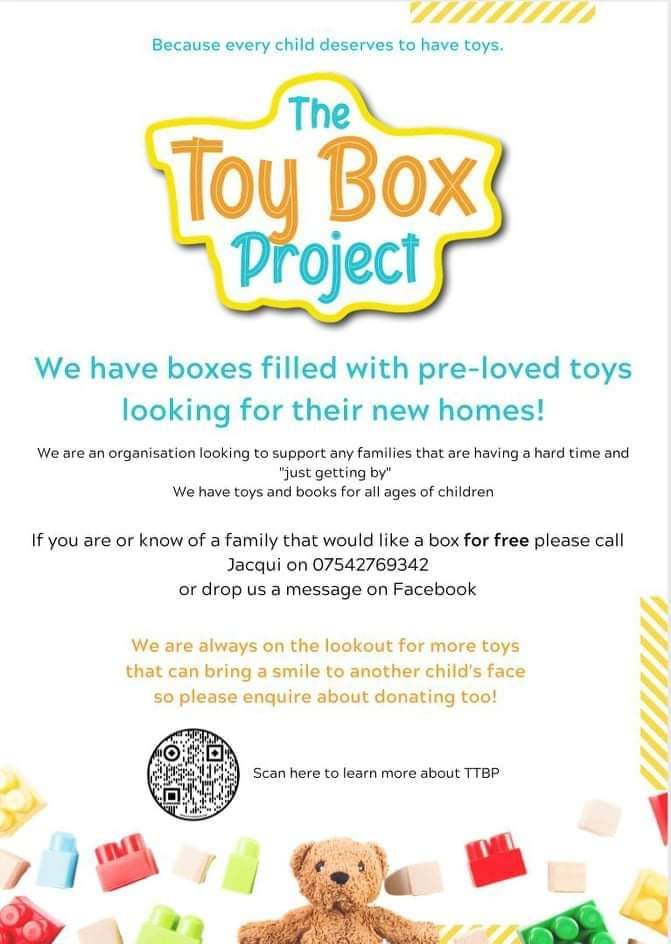 The Toy Box Project is a Selby based voluntary charity founded by Jacqui Crossley and Mandie Longfield in 2020.
The Toy Box Project is a Selby based voluntary charity founded by Jacqui Crossley and Mandie Longfield in 2020.
 For lots of people, mainly those without children, the Autumn clock-change is a thing of wonder – a whole extra hour in bed without having to sacrifice anything else in return…bliss! For parents, however, it can induce a feeling of dread. Many are accustomed to rising between 6 and 7am with their little larks, and whilst perhaps a touch on the early-side, 6-something cannot technically be classed as inhumane. Yet on the morning of Sunday 25 October, that 6 will have turned, literally overnight, into an altogether less appealing 5!
For lots of people, mainly those without children, the Autumn clock-change is a thing of wonder – a whole extra hour in bed without having to sacrifice anything else in return…bliss! For parents, however, it can induce a feeling of dread. Many are accustomed to rising between 6 and 7am with their little larks, and whilst perhaps a touch on the early-side, 6-something cannot technically be classed as inhumane. Yet on the morning of Sunday 25 October, that 6 will have turned, literally overnight, into an altogether less appealing 5!
Here is my step-by-step guide to helping your little one to make the transition out of British Summer Time as smoothly as possible.
1. Step-change
An incremental approach is usually best for babies and younger children and/or those who have generally fixed sleep and wake times. Commence this plan on Wednesday 21 October by keeping your little one up 15 minutes later than usual.
If they are keen to sleep a little later in the morning (although don’t assume this will happen), try to let your child take the extra sleep. If at all possible, ease meal and nap-times back by just 15 minutes on Thursday and then that evening, push bedtime back by a further 15 minutes – so that you are now half an hour later than usual.
Repeat the process of edging other timings back on Friday, advancing a further 15 minutes at bedtime and finally, on Saturday, so that you arrive at bedtime a whole hour later than where you started.
Managing the one hour change in these smaller steps means there is less scope for a child to become overtired. It also enables their body-clock to adjust. 60 minutes split over four days is manageable for almost all children.
2. All in
For less sensitive sleepers and older children for whom overtiredness isn’t so much of a risk, parents may find it works well to just push bedtime back on the Saturday night by as close to an hour as the child can manage. For a child who typically no longer naps, a quick power nap in the car/buggy in the early afternoon can be a useful strategy if you plan to postpone bedtime.
For a younger child who does still nap, a full hour is a long time to delay bedtime. If you are able to nudge the nap back slightly, to effectively spread the hour more evenly across the day, this can help to stave off overtiredness.
3. A middle-ground
With this option, you would split the 60 minute change across two days, trying to make an extra 30 minutes awake on Saturday and completing the change on Sunday, moving naps and mealtimes across both days accordingly. Save for very sensitive sleepers, this is usually my preferred option.
Alright on the night (eventually!)
Whatever happens, things will recover themselves. Babies and young children cannot tell the time and are much more driven by what time it feels like. With this in mind, no matter what time you are up on the morning of Sunday 25 October, operate to the “new” time and, over the course of the following few days, little body-clocks will find their new rhythm.
Lighter mornings
One helpful aspect of the clock-change when it comes to child sleep is the darker evenings. However, for a short time at least, this comes at the cost of lighter mornings. Daylight creeping into a child’s room in the morning will drive them to wakefulness and so taking steps to block out the light is a worthwhile investment.
Special thanks to Lauren from Little Sleep Stars for another super blog
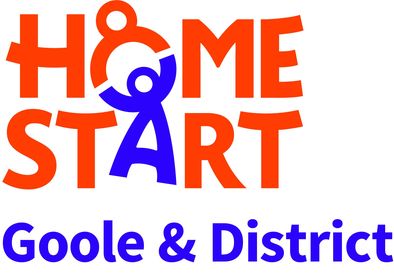
Home-Start is a charity that supports families when they need that little bit of extra help. A family can request the support if they have a child under 8. The support can be for anything from financial worries, routines, relationship breakdowns, illness, multiple births, or just because being a parent can be really tough and tiring sometimes!
We have been well-established in Goole for over 26 years and in recent years we are really pleased to have started to cover areas in and around Selby.
We support families with home-visiting volunteers who offer support, friendship and practical help, and we are now recruiting for the next Volunteer Training Course which is running in May. We currently have a lot more families needing support than we have volunteers, if you could spare a few hours a week, you could really make a difference!
For more information about support or volunteering call 01405 769966, text 07534 369783 or email office@hsgoole.org.uk
 Little Helping Hands is a local voluntary group based just outside of York, helping to provide essential equipment and clothing to children aged 0 – 5. Donations are welcomed no matter how big or small.Through the donations we receive from the general public, we create care packages of essential baby and children supplies. These can range from clothing to nappies, equipment to toys. Our packages are then distributed to families within the area of York who have been identified as needing that extra bit of help.
Little Helping Hands is a local voluntary group based just outside of York, helping to provide essential equipment and clothing to children aged 0 – 5. Donations are welcomed no matter how big or small.Through the donations we receive from the general public, we create care packages of essential baby and children supplies. These can range from clothing to nappies, equipment to toys. Our packages are then distributed to families within the area of York who have been identified as needing that extra bit of help.
There are several ways you can help us to make a difference:
Donations – Preloved or new donations of good quality supplies for babies and children aged 0-5 years. This could be toys, clothes, nappies, Moses baskets, baby toiletries etc. All your generosity helps to keep our service going.
Monetary Donation – There may be times we need to buy new equipment or clothing for a referral, as we simply do not have the item in our catalogue at the time it is needed. Therefore any monetary donations are very welcome.
Support- We are always looking for volunteers and people to raise awareness of our charity. Please do get in touch if you would like to be involved with Little Helping Hands York.
Please contact us for more information or to make a donation.
E: littlehelpinghandsyork@gmail.com

Offering Group and Private Hypnobirthing classes that are a complete antenatal class. Currently via Zoom but fully interactive. We also offer Placenta Remedy Services and Mother & Baby Skincare. Based in Pocklington but covering York, Hull and surrounding areas. Check our website for more information or call us.
T: 07368 589745
Early water based classes for babies aged 6 weeks to 4 months, bridging the gap between birth and baby swimming. In their individual baths, babies are gently introduced to the water. Learn holds and moves which can be transferred into the pool, enjoy sensory discoveries and beautiful bonding time.
Based in Thorpe Willoughby
T: 07927 385666 (Lorna)
Copyright 2024 Selby, Tadcaster and Goole Mumbler
Your Local Parenting Community
Made with by Wonder Media
